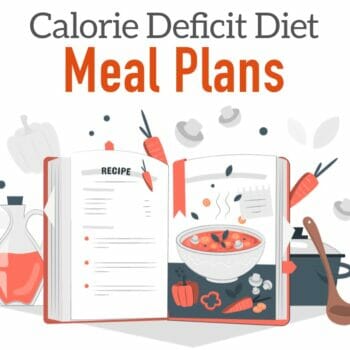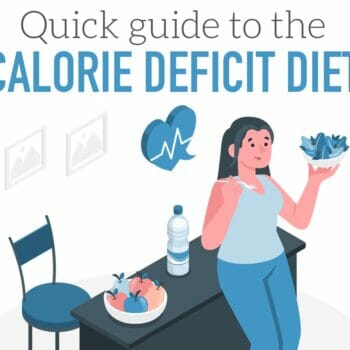A Macro Diet and Intuitive Eating: Learning to Eat Enough Instinctively

Most people think about intuitive eating as one’s “natural ability” to eat the right amount of food for what your body needs, but in reality, good intuitive eating is a “learned behavior” and does not come naturally for most.
People have to learn how much food is appropriate for their bodies and relearn this as their bodies age.
This is why I developed The Macro Solution program. A macro-based diet is an effective way to teach yourself how to eat right intuitively.
While many methods can teach better intuitive eating, the major point of difference with a flexible type of dieting is the freedom from food restrictions, obsessions, and deprivation. Many of my clients have been depriving themselves for a long time. With counting macros they don’t need to stress about food choices – or about “good” and “bad” foods. They just learn how much food is appropriate, based on their age, height, weight and lifestyle factors.
However counting macros still requires careful focus – but should you eat that way forever? Do you really want to be using the food scales forever? Or tracking every meal in MyFitnessPal?
Of course not!
Counting macros (Flexible Dieting) is a method for teaching you to eat the right amounts of food instinctively. Here’s how it does this:
- Improves nutritional quality by making sure you are getting a balanced amount of macros. A macro diet also recommends tracking fiber amount which ensures that you’re eating more nutrient-dense foods).
- Increases awareness of what you are eating, how much, and the amounts of macronutrients that are appropriate for you.
- Teaches you how much your energy requirements change based on the exercise you do.
- It helps end deprivation, binging, and appetite issues.
- And, of course, weight loss and physical transformation are the results of eating more in line with your body.
Macro Dieting provides gratifying results. But even better, it is a process leading to a diet strategy that can be sustained for a lifetime which is Intuitive Eating.
What is Intuitive Eating and How a Macro Diet Helps
Intuitive eating is the ability to maintain weight and good health by following your internal cues based on long-term habits.
It’s not so much a formula but a philosophy – which is why it can also be called mindful eating.
That’s why I advocate a macro diet – it provides the “how-to” upon which you can build the right habits.
Habits Are The Basis For Intuition
Nutritional habits are more important than intuition – because for many – their intuition is faulty. Years of dieting, disordered eating, (plus the industrialized food industry) has messed up their hunger and fullness signals.
Recognizing the calorie amount of food is not intuitive. That’s why almost everyone underestimates fast food calories. This information needs to be learned first. Through tracking and counting macros, you may learn that a foot-long Subway is too much food for someone of your size.
Counting Macros Means Eating What You Want
With macro-based dieting, you give yourself permission to eat the cupcake, or the chocolate brownie, or the ice cream. It helps you to keep these foods in their place and within the limitations of your required energy intake. Obsessive avoidance of these foods always backfires – at some point.
This habit is something you take with you into intuitive eating. Yes, you can enjoy a cupcake and maintain (and even lose) weight. You learn to be around these foods without the desire to binge on them.
This is why you can’t jump straight to intuitive eating. The right habits (for you) first need to be learned and instilled.
But, I’m Still Hungry
Managing hunger is critical.
Let’s say a 6-inch Subway is the appropriate caloric amount of fast food for your lunch. However, you choose the foot-long Subway because you know you would be hungry after eating the 6-inch or when you eat the 6-inch you go eat some chocolates afterward.
This could be a poor habit or an issue of managing hunger. Learning to eat slower can help to mitigate hunger. Macronutrient composition can also help.
Again this is part of the macro solution – eating appropriate amounts of fat, protein, and carb at each meal. Protein helps to satisfy hunger, so learning the habit of eating enough protein at each meal is critical. Loading your 6-inch sub with as many veggies as you can also helps because it adds food volume but with very few macros.
However, it’s also important to know that hunger is also normal and part of our physiology. It’s not a negative emotion but simply a signal that your body is needing more energy and has begun tapping into its reserves.
It’s ok to be hungry and it doesn’t mean that hunger has to be satisfied immediately. Intuitive eating also helps to teach you that it’s ok and even healthy to be hungry between meals. Humans evolved back in a time when food wasn’t so readily available and when hunger could last for days, not hours.
Teach yourself to eat intuitively using a macro diet.
In our modern environment, the right eating habits are not intuitive. They need to be learned, habituated, and then they can become ‘intuitive’ so starting a macro diet is a great way to start learning these habits. This website is full of resources to help you and I’m also available for more personalized help.
I hope that you can find freedom from constantly dieting by learning once and for all how much you should be eating more intuitively.
Accelerate Your Diet and Fitness Goals with My Macro Solution System
Step-by-step self-guided program -or- fully customized personal macros coaching. Feel exhilarated as you conquer your goals!
MACRO COUNTING
- 130 page step-by-step guide.
- Achieve fat loss without starvation.
- Individually tailored to your body composition.
- References
- Robinson, E., Aveyard, P., Daley, A., Jolly, K., Lewis, A., Lycett, D., & Higgs, S. (2013). Eating attentively: a systematic review and meta-analysis of the effect of food intake memory and awareness on eating. The American journal of clinical nutrition, ajcn-045245. link
- Paddon-Jones, D., Westman, E., Mattes, R. D., Wolfe, R. R., Astrup, A., & Westerterp-Plantenga, M. (2008). Protein, weight management, and satiety. The American journal of clinical nutrition, 87(5), 1558S-1561S. link
- Block, J. P., Condon, S. K., Kleinman, K., Mullen, J., Linakis, S., Rifas-Shiman, S., & Gillman, M. W. (2013). Consumers’ estimation of calorie content at fast food restaurants: cross sectional observational study. BMJ, 346, f2907. link
- Precision Nutrition – Choosing the best diet. link

 Calorie Deficit Meal Planner
Calorie Deficit Meal Planner Calorie Deficit Diet
Calorie Deficit Diet Carbs are Not Bad, Unhealthy, and Will Not Prevent Weight Loss
Carbs are Not Bad, Unhealthy, and Will Not Prevent Weight Loss Why is Diet and Exercise Such Hard Work?
Why is Diet and Exercise Such Hard Work? Can I Eat Saturated Fat While Tracking Macros?
Can I Eat Saturated Fat While Tracking Macros?